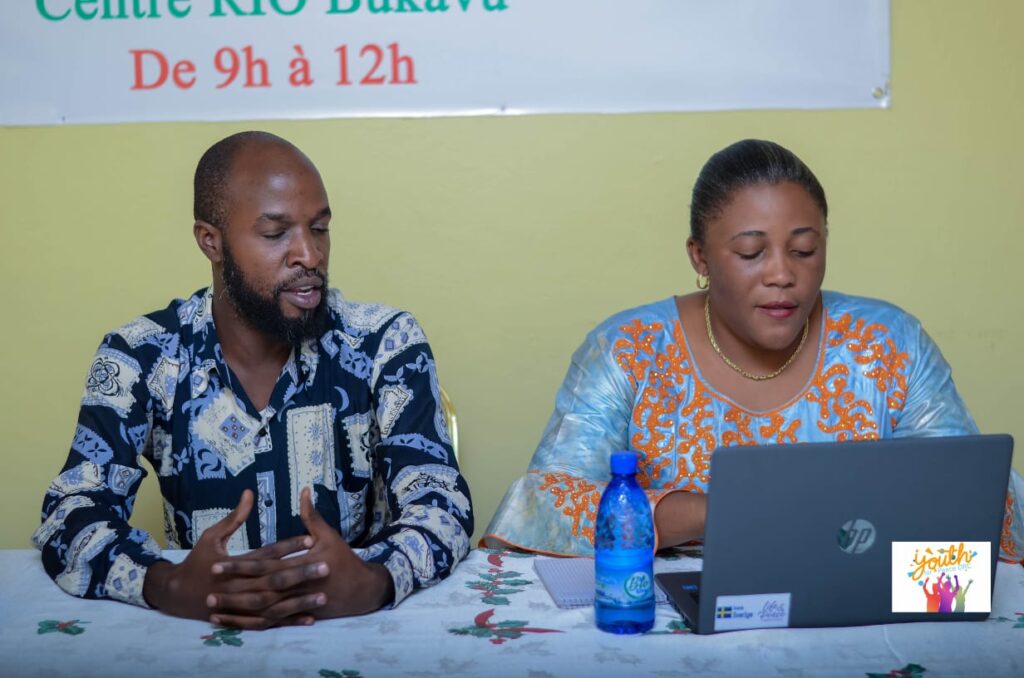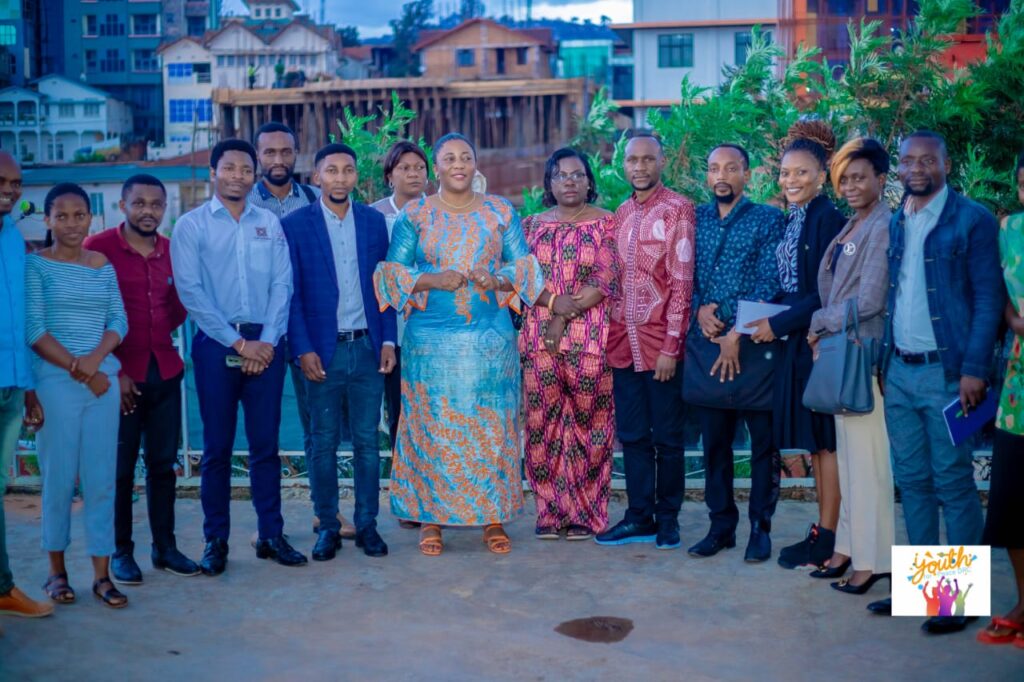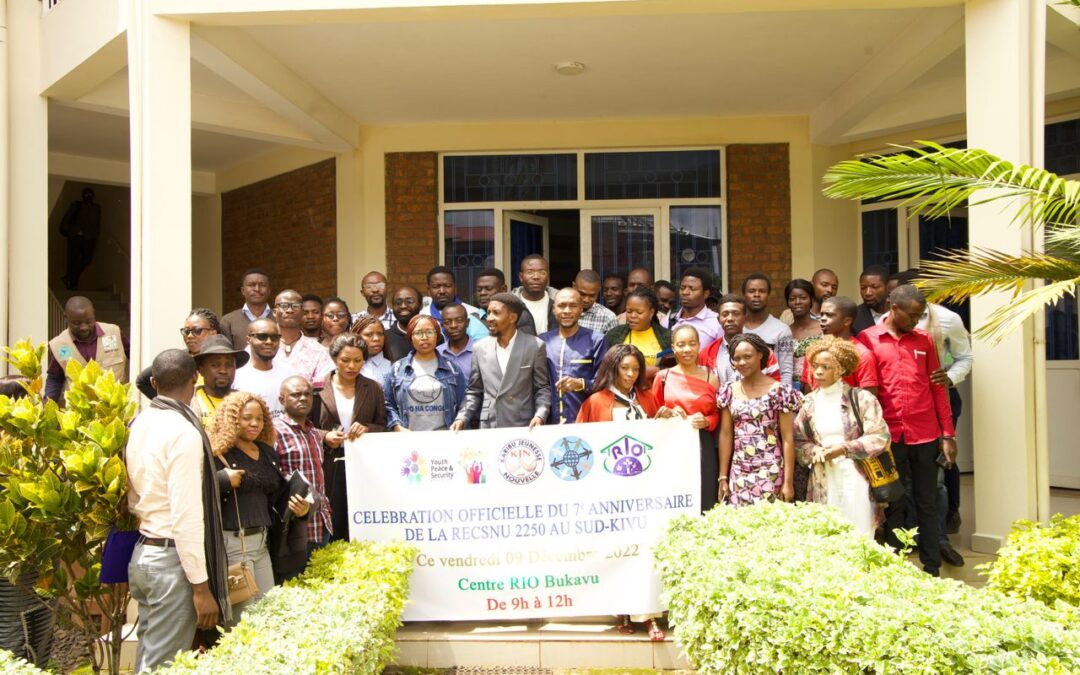By Jean Claude Muhungusa
INTRODUCTION
The history of the Great Lakes region of Africa has been marked by decades of conflict of various kinds due to the legacy of colonialism, illicit exploitation of natural resources, nationality and identity crisis, ethnic tensions, discrimination, lack of rule of law, political exclusion, poor governance, unemployment, poverty, etc. Narratives and research on the region tend to focus more on images of division, insecurity and precariousness than on the potential and capacity of the people to overcome the many challenges they face. The population of the sub-region, more than 60% of which is made up of young people under the age of 30, has developed a certain resilience in the face of conflict.
This youth, full of potential and energy, is increasingly positioning itself as a key player in the search for innovative solutions to the problems of peace and security in their countries.

- SOCIO-POLITICAL AND HISTORICAL CONTEXT/RDC
The Democratic Republic of Congo (DRC), a country in the heart of Africa, has experienced a prolonged conflict for several decades, resulting in more than 5 million deaths, the use of rape as a weapon of war, systematic looting, serious human rights violations, the destruction of basic socio-economic infrastructure, etc. The DRC is ranked second in the world in terms of the number of internally displaced persons (IDPs), with more than 2.7 million IDPs in the eastern provinces alone (GRID Report, 2022).
There were more than 500,000 IDPs in North Kivu province between November 2022 and February 2023 as a result of renewed fighting between the terrorist group M23 and the FARDC.
Youth activism in violent conflict reinforces the manifestation and resurgence of conflict in some territories and towns in eastern DRC (UN Secretary General’s Report, 2018).
2. SOME MAJOR CHALLENGES
- Economic situation: endemic unemployment among more than half the population, poverty and lack of access to financing for entrepreneurial initiatives by young people. Abandonment of agro-pastoral activities due to the activism of armed groups.
- Security situation: forced or involuntary recruitment of young people and adolescents by armed groups (more than 17 thousand children were released from armed groups between 2017 and 2021 according to a UNICEF report of March 2022), other young people are traumatized after having been victims of violence or their parents in their presence.
- Political situation: instability linked to the transfer of power and access to it, community conflicts, under-representation of youth and women in political institutions and other decision-making bodies, exclusion of youth from peace agreements and negotiations; this pushes them to adopt radical and violent behaviour in order to make their voices heard. Youth is thus used as stepping stones by politicians in search of a position.
3. SOME PEACE INITIATIVES FOR THE IMPLEMENTATION OF THE YPS AGENDA
- 3.1 Burundi:
- December 2022: Creation of a national commission to develop the roadmap for the implementation of the YPS Agenda
- February 2023: Adoption of the African Youth Charter to pave the way for the implementation of the JPS Agenda.
- 3.2 Rwanda
- Data is not yet documented but some youth organizations are mobilizing to popularize Resolution 2250 and advocate for its implementation in the country.
- 3.3 DRC:
- 2021: creation of a National Technical Secretariat for the implementation of Resolution 2250 within the Ministry of Youth
- December 9, 2021: Official launch of the National Coalition on Youth, Peace and Security for the DRC, CJPS DRC (with more than 1,000 youth CSO members)
- May-June 2022: national campaign to popularize Resolution 2250 and collect data for the development of the National Action Plan, NAP2250.
- August 2022: adoption of the NAP2250, making the DRC the 3rd country in the world with a NAP2250 (2nd in Africa after Nigeria).
- November 2022-January 2023: Resolution 2250 localization activities in North Kivu and South Kivu. A survey on the gender needs of youth was conducted by the provincial JPS coalitions and advocacy notes were developed for the inclusion of youth needs in local and provincial development plans in these provinces.
- 3.4 Youth for Peace DRC a platform of youth organizations was created in January 2020 to promote youth participation in the peace and development processes of the DRC. It has carried out :
- Between January 2020 and December 2022: several workshops, webinars, radio programs, and conferences, popular expression forums were organized around the JPS agenda in DRC, Rwanda and Burundi.
- February 2021: Launch of a large-scale Peace and Entrepreneurship Program, aimed at promoting financial empowerment of youth as a means to prevent conflict and build peace.
- Elaboration of a Concept Note for a project aiming at the ”Promotion of Community Radios in the implementation of the JPS agenda (Rwanda-Burundi-DRC)” with an emphasis on non-violent or conflict sensitive communication.
- Launch of the “Youth Crossroads for Peace” program, as a framework for expression and intergenerational and intercommunity dialogue for peace building.

CONCLUSION
All of the above initiatives are a means for youth in search of change to free themselves from the old demon of hatred, violence and war that has been bloodying our sub-region for several decades.
The challenges to be met remain numerous and perilous, but with determination, we are confident of succeeding. If past generations have failed, ours is bound to succeed in creating a climate of peace, trust and peaceful cohabitation among all the peoples of the sub-region, the only guarantee of sustainable development.
Personally, I was born during the war in the 1990s and I have never known peace in my country, the DRC. As much as this situation has been a fatal blow to my life as a young person, it challenges me and imposes itself on me as it does on all Congolese youth, as a challenge to be overcome in order to breathe the pipe of peace so desired and sought after by a whole generation.

